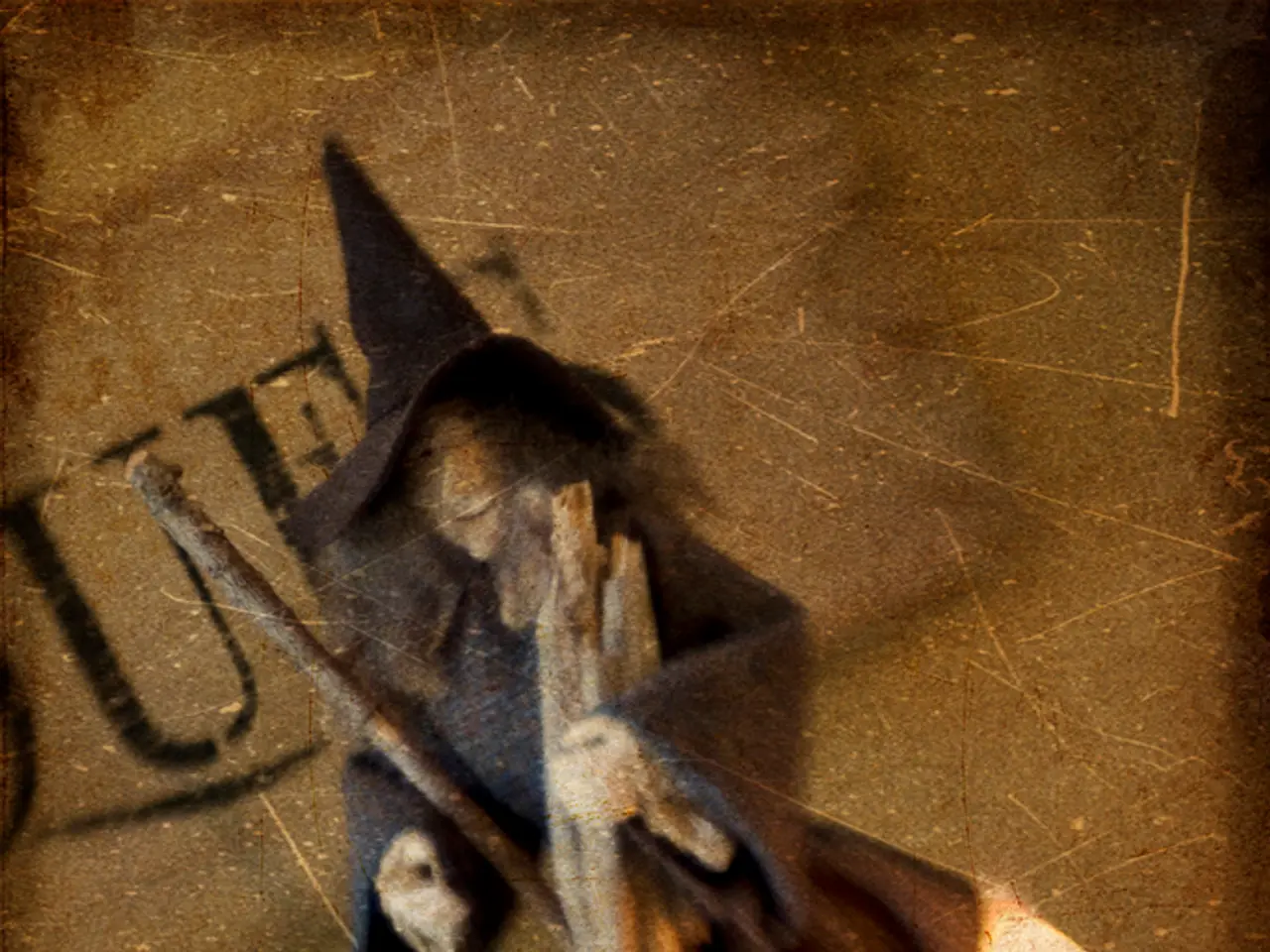Jack Stingy's Origins: The Root of a Halloween Custom
In the ancient land of Ireland, a man named Stingy Jack was notorious for his drinking, lying, cheating, and trickery. One of his most famous tricks involved tricking the Devil himself [1]. This tale, along with the Celtic tradition of Samhain, forms the basis of the modern Jack-o'-Lantern [3][4].
Samhain, dating back thousands of years, was a celebration marking the end of the harvest season and the beginning of winter. It was a time when the boundaries between our world and the spirit world were thought to bend, making it a significant event in Celtic folklore [2]. During this festival, people would carve large turnips or other vegetables to create lanterns, a practice that has been linked to the legend of Stingy Jack [1][3][4].
The story goes that Stingy Jack tricked the Devil into becoming a sixpence, trapping him in his pocket by placing a crucifix inside. As a final act of mercy, the Devil tossed Jack a burning ember to light his way. Jack, using his ingenuity, created a makeshift lantern by hollowing out a turnip and placing the ember inside [1].
When Irish immigrants brought Halloween traditions to America in the 19th century, they adapted the practice by carving pumpkins instead of turnips. Pumpkins, native to North America, are larger, softer, and easier to carve, making them a practical substitute [2]. Over time, pumpkin carving became the established Halloween custom in the United States. The pumpkin jack-o'-lanterns were used to ward off evil spirits and are now a key decorative element of Halloween festivities [3].
The tradition of dressing up in costumes during Samhain has also been carried over to modern-day Halloween. This practice, known as guising, is believed to have given rise to trick-or-treating, where people travel door to door for treats [2].
While the true origin of the Jack O' Lantern is unclear, it is said that people would put burning coals into carved turnips or potatoes as lanterns. The modern practice of carving pumpkins for Halloween can be traced back to this ancient tradition [3].
In summary, the evolution went from turnip carving in Ireland and the British Isles, rooted in Celtic folklore and mythology about spirits and a figure called Stingy Jack, to pumpkin carving in America due to the availability and suitability of pumpkins during the immigrant adaptation of the tradition. Today, the Jack-o'-Lantern remains a beloved symbol of Halloween, its origins deeply rooted in the rich tapestry of Celtic mythology and Irish immigrant history.
[1] https://www.history.com/news/the-history-of-jack-o-lanterns [2] https://www.nationalgeographic.com/culture/history/the-history-of-halloween/ [3] https://www.britannica.com/topic/Jack-o-lantern [4] https://www.irishcentral.com/culture/history/the-origins-of-the-jack-o-lantern-legend-and-its-connection-to-halloween
Living in modern America, the fashion and beauty industry have transformed the classic Irish pumpkin jack-o'-lantern into various aesthetic forms, creating a unique lifestyle accessory for Halloween. At the same time, home and garden stores offer an array of pumpkins and carving tools, allowing individuals to recreate the age-old tradition of carving these gourds.




